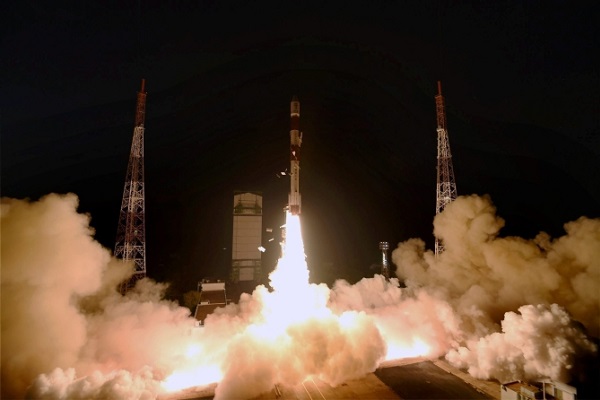The Indian Space Research Organisation’s (ISRO) workhorse rocket PSLV-C48 blasted off from the first launch pad of the Satish Dhawan Space Centre at Sriharikota in Andhra Pradesh on Wednesday, carrying India’s radar imaging earth observation satellite RISAT-2BR1 and nine foreign satellites.

HIGHLIGHTS:
- All satellites, including RISAT-2BR1, placed in orbit
- Customer satellites from the US, Israel, Italy, Japan
- Launch vehicle took off at 3.25 pm
With clear skies in the background, the 44.4-metre tall rocket lifted off majestically at 3.25 pm.
Incidentally, the launch marks a significant milestone for the space agency as it is the 50th flight of PSLV and the 75th vehicle mission from Sriharikota.
The 628-kg satellite is meant for applications in various fields like agriculture, forestry and disaster management support. It would also serve military purposes, ISRO sources said.
Six satellites are from the United States and one each from Italy, Japan and Israel.
Before the launch of RISAT (Remote Imaging Satellite), India relied on images provided by Canadian satellites as the current domestic remote sensing spacecraft are not equipped to capture images of the earth during cloud cover.
The space agency said the satellites are being launched under a commercial arrangement with NewSpace India Ltd. The mission life of RISAT2-BR1 is five years, ISRO said. RISAT-2BR1 follows the successful launch of RISAT-2B on May 22. This is the second satellite in the RISAT-2B series and two more satellites are expected to be launched by the ISRO in coming days to complete a quartet of these “spy satellites”.
By March 2020, ISRO has planned to launch 13 space missions, including the successful CARTOSAT-3 launch and Wednesday’s scheduled RISAT-2BR1 launch. ISRO is also all set to launch its most ambitious space mission yet – the Gaganyaan project under which the ISRO will attempt to send three Indians to space on an Indian spacecraft.











